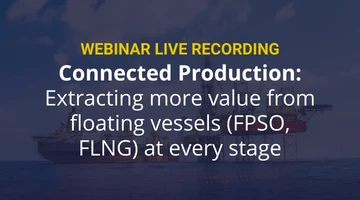Rolls Royce's Norwegian fairy tale
A success story in alternative fuel
Add bookmarkRolls Royce on the Norwegian coast: a success story
Speaking at the recent LNG Bunkering Summit, Rolls Royce’s VP of LNG Systems, Oscar Kallerdahl, gave an overview of the firm’s operations in Norway.
Mr Kallerdahl began by discussing the three-pronged approach to LNG that Rolls Royce have been taking towards LNG, focussing on ship design, system integration, and the selling of those products. They have 55 vessels currently powered by LNG, 29 LNG systems, and have sold more than 100 LNG engines.
[inlinead]
The firm’s history with LNG in Norway began in 2000 with truck bunkering using tanks between 100 and 200 m3 in volume, but has been driven further by the NOx fund, the development of more infrastructure, and the resulting support provided to ship owners. Rolls Royce now owns 18 facilities across Norway and can provide ship-to-ship bunkering. On the back of LNG success, there are now plans to bring LBG, or liquified bio gas, to Norway to achieve full GHG neutrality in operations. As with every other LNG ship within EU waters, all Norwegian FLNGs are assisted by government subsidies.
Painting a picture by numbers
Rolls Royce have three new licenses due to come in from 2021 onwards, and are expect to reduce GHG emissions in their Norwegian operations by 25 per cent. Over the duration of the ten year contract, they aim to have a ship at every port, with 34 port calls north bound, and 33 port calls south bound. This would require 11 ships in total. Other projects include:
- A retrofit of six vessels with Hurtigruten, a cruise company
- A new build contract for four vessels, all using an LNG system supplied by rolls, batteries, efficient propulsion, power management systems, and heat recovery systems
- A pure gas engine project in Bergen, with the following reductions against fuel oil: NOx – 92 per cent, CO2 – 30 per cent, Sox – 99 per cent, particulates – 99 per cent, GHG – 20 per cent
Holistic efficiency savings
Rolls Royce have developed a multifaceted approach to efficiency savings in shipping, combining to achieve a 40 per cent total reduction. Mr Kallerdahl has admitted that there are additional savings to be made, but that the changes already made represent the “low-hanging fruit”.
- Wavepiercing technology, for a five to eight per cent efficiency saving
- Gas engines for an 18 to 22 per cent saving
- Hybrid shaft generators for four to six per cent savings
- Promas propulsion and manoeuvring system for a five to eight per cent saving
- Design- and engineering-integrated ship system for a four to six per cent saving
Analysis of vessel operation
During his speech, Mr Kallerdahl stressed the importance of properly understanding the time ships spend in certain activities – and revealed results of an analysis conducted into Rolls Royce’s fleet – finding that 62 per cent of time is spent in transit, only four per cent in manoeuvre, 12 per cent in slow transfer, and 22 per cent in port. By harnessing LNG over diesel, they expect to reduce the CO2 emissions of their vessels by 30 per cent by 2020, or 35 per cent if using a hybrid.
“We are predicting steady growth in the sector – there will be no gold rush, no free beer tomorrow. We expect 23 per cent of fuel usage to be LNG by 2050, up from less than one per cent in 2015.”
Oscar Kallerdahl, Vice President
LNG is an important part of the future energy mix – perhaps not the catch-all solution it is often thought of as being in the sector, but nevertheless worth pursuing. Its proliferation worldwide is increasing apace, and ever-stricter regulations will continue to drive change. The price gap between LNG and more conventional fuels will most likely widen, but Rolls Royce’s “fairy tale with LNG” should encourage further investment in this growing field.
If you enjoyed this article, make sure to read Oil & Gas IQ's upcoming LNG World Report later this week.







